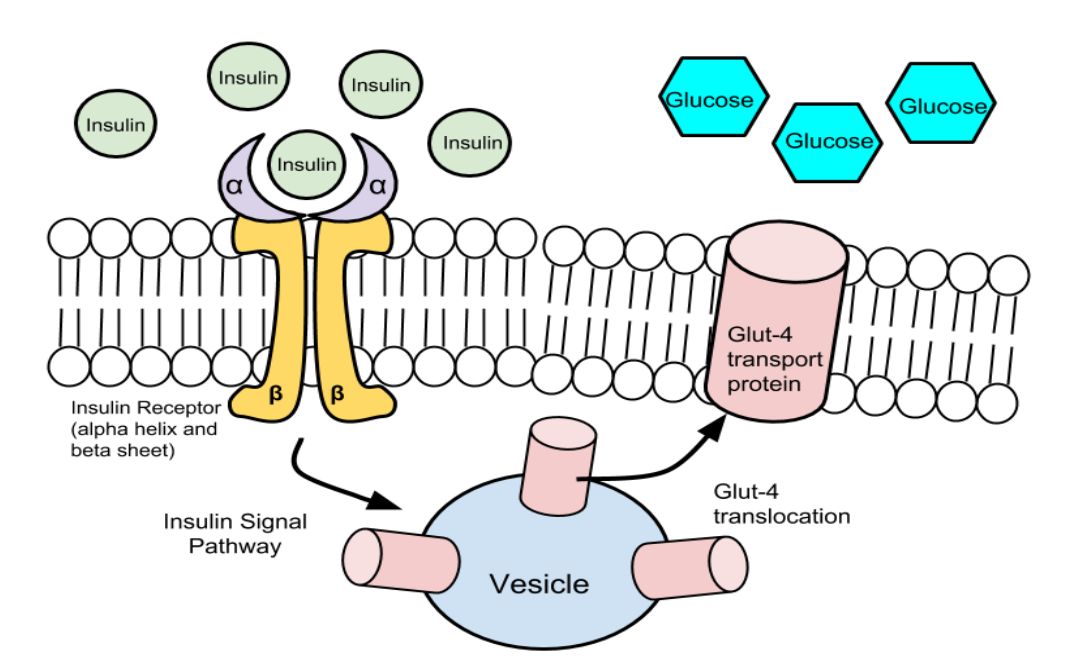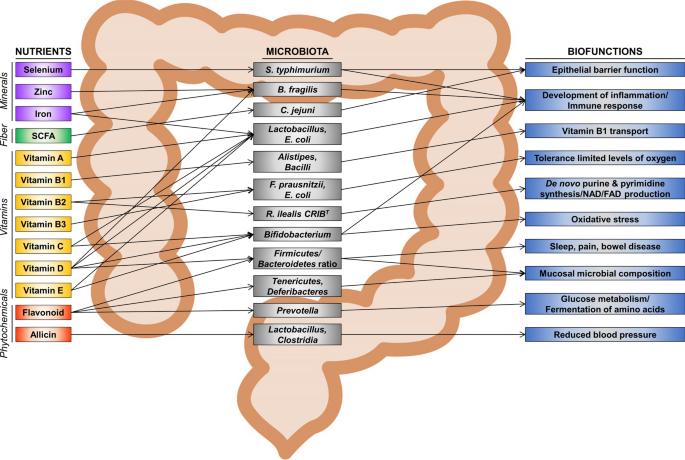Chia Seeds: The Nutritional Powerhouse and Future of Food Innovation
Posted on January 26, 2024 • 13 minutes • 2668 words • Other languages: Русский
Table of contents
- Influence of Growing Location and Processing on Digestion
- Assessment of Digestion Patterns
- Comparative Analysis of Antioxidant and Anti-inflammatory Activities
- Gastrointestinal Digestion’s Role in Nutrient Release
- Development of In Vitro Digestion Models
- Chia Seeds' Nutritional Composition
- Rich Source of Minerals, Vitamins, and Phytochemicals
- Analysis of Bioactive Components and Effects
- Contributions to the Field of Food Science
- Summary
- References
Chia seeds, derived from the plant Salvia hispanica L., have emerged as a significant player in the realm of plant-based nutrition. Their protein, characterized by a well-balanced amino acid profile, stands out not only for its health benefits but also for its environmental sustainability. This balance in amino acids is vital as it closely aligns with human nutritional needs, making chia protein a robust alternative to traditional animal-based proteins.
The significance of chia protein extends beyond its nutritional value. In an era where environmental consciousness is paramount, chia cultivation presents a more sustainable option compared to many animal protein sources. Chia plants typically require less water and land resources and have a lower carbon footprint. This environmental efficiency coupled with the health benefits makes chia an attractive ingredient in the plant-based food industry.
Moreover, chia protein’s appeal is heightened by its versatility in various food products. It can be incorporated into a range of items, from baked goods to protein bars, offering an easy way to enrich the nutritional content of everyday foods. This adaptability, combined with its health and environmental benefits, positions chia protein as a front-runner in the evolving landscape of food alternatives focused on health and sustainability.
Influence of Growing Location and Processing on Digestion
The digestibility and nutritional efficacy of chia seed protein are influenced not only by its intrinsic properties but also by external factors such as the geographical location where the seeds are grown and the processing methods employed. Variations in soil composition, climate, and farming practices across different growing regions can lead to noticeable differences in the nutrient profile of chia seeds. This, in turn, affects how the body processes and absorbs these nutrients. The protein content, as well as the quality of amino acids and other bioactive compounds in chia seeds, might vary depending on these environmental factors.
| A chia field under storm weather |
|---|
 |
Furthermore, the processing techniques applied to chia seeds can significantly impact their digestibility and nutritional quality. Methods like milling, heating, or chemical treatments can alter the protein structure, affecting its digestibility and the body’s ability to utilize its amino acids effectively. Such processing can also influence the release of bioactive compounds, which play a crucial role in the seeds' health-promoting properties.
This interplay of growing conditions and processing techniques underscores the complexity of food science and nutrition. It highlights the need for a nuanced understanding of how various factors contribute to the nutritional profile and health benefits of plant-based proteins like those found in chia seeds. As the demand for nutritious, plant-based foods grows, understanding these dynamics becomes increasingly important for maximizing the health benefits of these food sources.
Assessment of Digestion Patterns
The gastrointestinal fate of chia seed protein components, such as degummed-defatted flour (DDF), protein concentrate (PC), and isolated albumin (Alb) and globulin (Glo) fractions, plays a pivotal role in their nutritional impact. Each of these components undergoes a distinct digestion process in the gastrointestinal tract, which significantly influences their bioavailability and efficacy as a nutrient source. The DDF, obtained by removing gums and fats from chia seeds, presents a different digestion profile compared to more concentrated forms like PC, Alb, and Glo. These variations are due to differences in their composition and structural properties.
| Digestion profiles of carbohydrate ingredients as measured by in vitro kinetic enzymatic hydrolysis. Maltose is a sugar standard. Means are shown with ± standard error of the mean. IMO isomaltooligosaccharide |
|---|
 |
Protein concentrates, which are more refined, often show enhanced digestibility due to the removal of other components that may hinder enzyme access. In contrast, Alb and Glo, being isolated protein fractions, offer a more specific insight into how individual protein types from chia seeds behave during digestion. The way these proteins break down into peptides and amino acids, and how they are subsequently absorbed, is critical to understanding their potential health benefits.
Studying the gastrointestinal digestion of these various chia seed components not only sheds light on their nutritional value but also helps in formulating them effectively for use in food products. By understanding their digestion patterns, it becomes possible to tailor these components to enhance their bioavailability, making them more effective as functional ingredients in various dietary contexts.
Comparative Analysis of Antioxidant and Anti-inflammatory Activities
The bioactivity of chia seed protein, particularly its antioxidant and anti-inflammatory properties, has garnered significant interest in nutritional science. The digestion of chia protein leads to the formation of various peptides and amino acids, which play a crucial role in modulating the body’s oxidative and inflammatory responses. The antioxidant activity of these digested protein components is critical in combating oxidative stress, a key factor in the development of chronic diseases and aging. These protein derivatives can neutralize reactive oxygen species (ROS), thereby protecting cells from damage caused by oxidative stress.
| Early changes in a human venule involved in an acute inflammatory response. PMNs are “marginating” along the endothelial surface of a venule preparatory to their migrating into the extravascular space due to their adhesion to endothelial surfaces. |
|---|
 |
Moreover, the anti-inflammatory properties of chia protein digestion products are equally important. Inflammation is a natural response of the body to injury or infection, but chronic inflammation is linked to numerous health issues including heart disease, diabetes, and arthritis. The anti-inflammatory effects of chia protein can help in mitigating such conditions, potentially reducing the risk of chronic disease development.
These bioactivities are not only essential for understanding the health benefits of chia seeds but also have practical implications in the development of functional foods and nutraceuticals. Incorporating chia protein into the diet could offer a natural way to enhance antioxidant defenses and reduce inflammation, contributing to overall health and wellness. The unique combination of antioxidant and anti-inflammatory effects underscores the potential of chia protein as a valuable component in health-focused dietary strategies.
Gastrointestinal Digestion’s Role in Nutrient Release
Gastrointestinal digestion plays a critical role in the breakdown and assimilation of nutrients from food, including proteins like those found in chia seeds. This process involves a complex interplay of physical and chemical actions, orchestrated primarily by various digestive enzymes. The main function of gastrointestinal digestion is to convert complex food substances into simpler forms that the body can easily absorb and utilize. For proteins, this means breaking them down into amino acids and small peptides, which are the building blocks essential for numerous bodily functions.
| Absorption of nutrients |
|---|
 |
The efficiency of this digestive process significantly influences the nutritional quality of the consumed food. Proteins that are more readily broken down and absorbed provide greater nutritional benefits. This is particularly important for plant-based proteins, which sometimes present challenges in terms of digestibility compared to animal proteins. The gastrointestinal tract’s ability to effectively process these proteins can determine the extent to which their amino acids are available for use by the body.
Understanding the dynamics of gastrointestinal digestion is crucial not only for assessing the nutritional value of foods but also for designing dietary plans and food products that maximize nutrient absorption. Enhancing the digestibility of proteins, especially in plant-based sources like chia, is key to ensuring that the body receives the full range of essential nutrients for optimal health and functioning.
Development of In Vitro Digestion Models
The development of in vitro digestion models has become increasingly significant in the field of food science, especially in the context of assessing the nutritional quality of proteins. These models serve as efficient, controlled, and ethical alternatives to in vivo studies in humans or animals, which are often laden with high costs, technical complexities, and ethical concerns. In vitro digestion models are designed to accurately mimic human digestive processes, providing a practical means to study the breakdown and absorption of nutrients, including proteins.
| Artificial digestion models |
|---|
 |
In these models, food is subjected to a series of treatments that simulate the mechanical and enzymatic conditions of the human gastrointestinal tract. This approach allows researchers to study how different foods and their components, such as proteins, are digested and how they interact with digestive enzymes. The results yield valuable insights into the bioavailability and potential health impacts of these nutrients.
The importance of in vitro digestion models is underscored by their ability to replicate human digestion conditions closely. They enable the examination of various factors, such as the effects of processing, preparation, and the presence of other food constituents on protein digestibility. This knowledge is crucial in formulating dietary recommendations and developing food products that are not only nutritious but also align with the body’s ability to derive maximum benefit from them. In vitro models thus play a pivotal role in advancing our understanding of food science and nutrition.
Chia Seeds' Nutritional Composition
Chia seeds, originating from Southern Mexico and Northern Guatemala, have gained popularity as a superfood due to their exceptional nutritional profile. One of the most notable aspects of chia seeds is their high protein content, which ranges from 18-25% of their dry weight. This is significantly higher compared to most commonly consumed cereal grains, making chia seeds an excellent plant-based protein source.
| Nutritional composition |
|---|
 |
The protein in chia seeds is not only abundant but also of high quality, containing all essential amino acids, which are crucial for various bodily functions including muscle building and repair. This comprehensive amino acid profile is particularly important for vegetarians and vegans, who may struggle to obtain complete proteins from plant-based sources.
Apart from proteins, chia seeds are also rich in dietary fiber, carbohydrates, and lipids, particularly polyunsaturated fatty acids. These nutrients contribute to the overall health benefits of chia seeds, including improved digestive health, better heart health, and enhanced weight management. The high fiber content aids in digestion and satiety, while the healthy fats contribute to cardiovascular health.
The versatility of chia seeds in culinary applications further adds to their appeal. They can be easily incorporated into various dishes, from smoothies and yogurts to baked goods, making it simple to integrate this nutrient-dense food into a balanced diet. Their ability to absorb water and form a gel-like substance also makes them a unique ingredient for creating healthier versions of many recipes.
Rich Source of Minerals, Vitamins, and Phytochemicals
Chia seeds stand out not only for their protein content but also for being a rich source of essential minerals, vitamins, and phytochemicals, making them a nutrient powerhouse. The mineral content in chia seeds is particularly impressive, boasting a range of 4–6% by dry weight. This includes notably high levels of calcium, with chia seeds containing up to six times more calcium than milk, a traditional calcium-rich food. Additionally, chia seeds offer 1.6 times more iron than chickpeas, making them an excellent source of this vital mineral, especially for individuals following plant-based diets.
| Influence of Dietary Fiber, Micronutrients, and Phytonutrients on the Gut Microbiota |
|---|
 |
Beyond minerals, chia seeds are also a valuable source of vitamins, including vitamin A , B , K , E , and D . These vitamins play various roles in the body, from supporting immune function to maintaining healthy skin and bones. The presence of such a diverse range of vitamins enhances the overall nutritional profile of chia seeds.
Phytochemicals, another key component of chia seeds, include polyphenols and sterols . These compounds are known for their antioxidant properties, which can help protect the body against oxidative stress and inflammation, reducing the risk of chronic diseases. The variety and richness of these nutrients not only make chia seeds a superfood but also contribute to their growing popularity as a functional food ingredient in health-conscious diets. Their inclusion in daily nutrition can significantly contribute to meeting various dietary requirements, offering a compact and versatile solution to nutrient intake.
Analysis of Bioactive Components and Effects
The analysis of bioactive components in chia seeds, particularly after digestion, is a critical area of research that delves into understanding their health effects. This analysis involves studying the various compounds that are released or transformed during the digestion process and assessing their impact on health. These bioactive components include a range of substances like antioxidants, amino acids, peptides, and other compounds that play a role in promoting health and preventing diseases.
One of the key aspects of this analysis is to evaluate how these compounds interact with the human body, especially in terms of their bioavailability and efficacy. For instance, the antioxidant components in chia seeds are of particular interest due to their potential in combating oxidative stress, a factor implicated in aging and many chronic diseases. Understanding how these antioxidants are released during digestion and how effectively they can be absorbed and utilized by the body is crucial.
Similarly, the study of peptides and amino acids that result from protein digestion in chia seeds provides insights into their potential benefits for muscle growth, immune function, and overall health. The bioavailability of these components determines their effectiveness in contributing to the nutritional value of chia seeds.
This comprehensive analysis of bioactive components extends beyond the basic nutritional profile of chia seeds, offering a deeper understanding of their potential health benefits. It contributes significantly to the field of functional foods, where the focus is not just on the nutrient content but also on the specific health benefits that these nutrients can provide.
Contributions to the Field of Food Science
Chia seeds, as functional food ingredients, resonate with the shifting preferences of health-conscious consumers. Their incorporation into daily diets aligns with a growing trend towards foods that offer specific health benefits beyond basic nutrition. Functional foods, like chia seeds, are chosen for their potential roles in improving health and reducing the risk of disease. They are nutrient-rich and may provide antioxidants, anti-inflammatory agents, and essential nutrients that support overall health and well-being.
The appeal of chia seeds as a functional food is multifaceted. They are not only nutrient-dense but also versatile, making them easy to incorporate into various diets and culinary practices. Their high fiber content, quality protein, and beneficial fats fit well into a balanced diet aimed at promoting heart health, digestive wellness, and weight management. Additionally, the presence of antioxidants and other bioactive compounds in chia seeds contributes to their functional properties, potentially offering protective effects against oxidative stress and inflammation.
This focus on functional foods reflects a broader shift in consumer preferences towards foods that support long-term health. People are increasingly seeking out natural, plant-based options like chia seeds that offer health benefits beyond basic nutrition, aligning with a proactive approach to health and wellness.
Summary
The article presents a comprehensive overview of the nutritional and health benefits of chia seeds, emphasizing their role as a functional food ingredient. It begins by highlighting chia protein’s balanced amino acid profile, positioning it as a healthier and environmentally friendly alternative to animal-based proteins. The article also discusses the influence of geographical growing conditions and processing techniques on chia seed protein’s digestibility and nutritional value. It delves into the gastrointestinal digestion of chia seed components, underlining the importance of understanding their bioavailability for maximizing health benefits.
Further, the article explores the antioxidant and anti-inflammatory properties of chia seed protein, underscoring its potential in combating oxidative stress and inflammation. The role of gastrointestinal digestion in nutrient release and absorption, particularly for plant-based proteins like chia, is also examined. The development of in vitro digestion models is highlighted as a crucial tool for studying nutrient breakdown and absorption, offering insights into the bioavailability and health impacts of chia proteins.
The high protein content of chia seeds, along with their rich mineral, vitamin, and phytochemical composition, is discussed, emphasizing their nutritional superiority over most cereal grains. The article also sheds light on the analysis of bioactive components in chia seeds, exploring their health effects post-digestion. Finally, it concludes by reflecting on the growing consumer interest in functional foods like chia seeds, driven by their nutrient density and potential health benefits. The article positions chia seeds as an integral part of a health-conscious diet, contributing to overall wellness and disease prevention.
References
- A comparative study of the digestion behavior and functionality of protein from chia (Salvia hispanica L.) ingredients and protein fractions
- https://en.wikipedia.org/wiki/Globulin
- https://en.wikipedia.org/wiki/Albumin
Share
Tags
Counters

